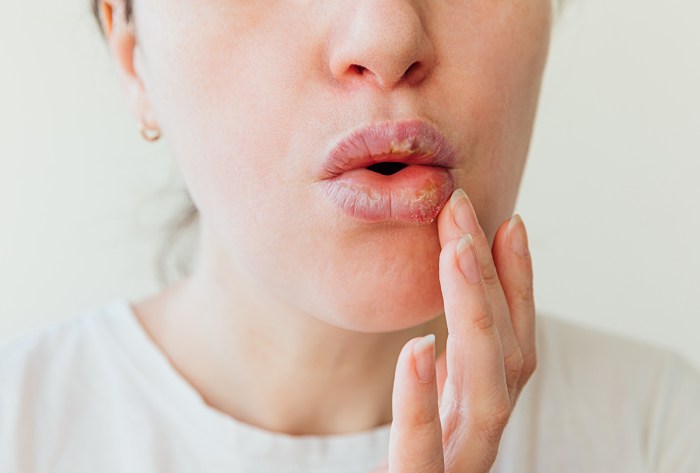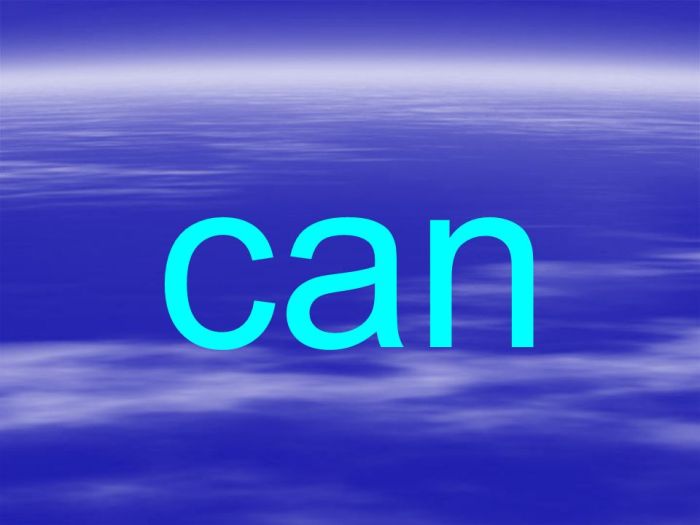What causes swollen lips? This comprehensive guide delves into the various factors that can lead to swollen lips, from common allergies to more serious medical conditions. We’ll explore the symptoms, mechanisms, and even potential contributing factors for each cause. Understanding the causes is crucial for proper diagnosis and treatment.
From simple irritations to severe reactions, swollen lips can be a perplexing issue. This exploration will equip you with the knowledge to identify potential causes, differentiate between various scenarios, and ultimately, understand how to navigate this common problem.
Causes of Swollen Lips: What Causes Swollen Lips
Puffy, swollen lips can be a minor inconvenience or a symptom of a more serious underlying condition. Understanding the potential causes can help you identify the issue and seek appropriate medical attention. This exploration delves into the various reasons behind lip swelling, from common irritants to more concerning medical conditions.
Allergic Reactions
Allergic reactions are a common cause of lip swelling. These reactions occur when the immune system overreacts to a harmless substance, called an allergen. This overreaction triggers the release of histamine and other chemicals, leading to inflammation and swelling.
- Food allergies: Certain foods, such as peanuts, shellfish, or strawberries, can trigger allergic reactions. Symptoms can range from mild itching and hives to severe swelling of the lips, tongue, and throat. This can be life-threatening and immediate medical attention is crucial.
- Contact allergies: Contact with certain substances, such as latex, certain cosmetics, or plants (like poison ivy), can cause allergic reactions in susceptible individuals. The swelling typically occurs at the site of contact.
- Medication allergies: Some medications can trigger allergic reactions, resulting in lip swelling, along with other symptoms like hives or difficulty breathing. It’s important to report any unusual reactions to medications to your doctor immediately.
Infections
Infections can also cause lip swelling, often accompanied by other symptoms like fever, pain, and blisters. These infections can be caused by viruses, bacteria, or fungi.
- Viral infections: Cold sores (herpes simplex virus) are a common viral infection that causes painful blisters on the lips and surrounding skin, which can lead to swelling.
- Bacterial infections: Bacterial infections, like impetigo, can manifest with red, swollen, and sometimes crusty lesions around the mouth and lips. These often require antibiotics for treatment.
- Fungal infections: Fungal infections, while less common, can affect the lips and cause swelling, redness, and itching. These infections may be associated with other skin issues.
Injuries
Injuries are another potential cause of swollen lips. These injuries can range from minor scrapes to more severe trauma.
- Burns: Thermal or chemical burns can cause significant swelling of the lips and surrounding tissues. The severity of the swelling depends on the extent and depth of the burn.
- Bite injuries: Accidents involving bites from animals or other individuals can lead to lip swelling. The degree of swelling will vary depending on the severity of the bite and the presence of infection.
- Trauma: Physical trauma, such as a blow to the lips, can result in swelling and bruising. The swelling may be accompanied by pain and discomfort.
Other Potential Causes
There are various other factors that can lead to lip swelling, including:
- Dehydration: Dehydration can cause swelling in various parts of the body, including the lips. Drinking enough fluids can often alleviate this.
- Sun exposure: Excessive sun exposure can irritate and swell the lips, particularly in individuals with sensitive skin. Protecting the lips from the sun with lip balm is important.
- Hormonal changes: Hormonal fluctuations can sometimes affect the tissues around the mouth, leading to minor swelling.
- Certain medical conditions: Certain medical conditions, like some autoimmune diseases or conditions affecting the blood vessels, can cause lip swelling.
Table of Potential Causes
| Cause | Symptoms | Contributing Factors |
|---|---|---|
| Allergic Reactions | Itching, hives, redness, swelling, difficulty breathing (severe cases) | Exposure to allergens (foods, medications, environmental factors), pre-existing allergies |
| Infections | Pain, fever, blisters, redness, crusting, sores | Weakened immune system, contact with infected individuals, contaminated surfaces |
| Injuries | Bruising, pain, bleeding, swelling, broken skin | Accidents, bites, burns, trauma |
| Other Potential Causes | Dehydration, sun exposure, hormonal changes, certain medical conditions | Lack of fluids, prolonged sun exposure, hormonal fluctuations, underlying health issues |
Allergies and Reactions

Swollen lips can sometimes be a sign of an allergic reaction. Understanding the triggers and the body’s response is crucial for recognizing and managing these reactions. This section delves into the various allergens that can cause lip swelling, the typical timeframe for reactions, and examples of severe cases.
Allergens Causing Lip Swelling
Allergic reactions, often triggered by contact with an allergen, can lead to lip swelling. Common allergens include specific foods, medications, and environmental factors. Identifying these triggers is vital for preventing future reactions.
Food Allergies
Certain foods can trigger allergic reactions, leading to lip swelling in susceptible individuals. These include peanuts, tree nuts, fish, shellfish, milk, eggs, soy, and wheat. Reactions can manifest in a variety of ways, including hives, itching, and difficulty breathing. The timeframe for reactions varies, but it’s important to note that some individuals may experience a rapid onset, while others might experience delayed reactions.
Medication Allergies
Medications can also cause allergic reactions, with lip swelling being a potential symptom. Penicillin, aspirin, and certain over-the-counter pain relievers are known culprits. Reactions to medications often manifest within a few hours or minutes of taking the medication. Individuals experiencing such reactions should immediately seek medical attention.
Swollen lips can be a real pain, right? It could be allergies, a reaction to certain foods, or even dehydration. Sometimes, people try weird remedies like using toothpaste on pimples, but does that actually work? Check out this article to learn more about whether using toothpaste on pimples is effective does using toothpaste on pimples really work.
Ultimately, though, if your lips are constantly swollen, it’s always best to see a doctor to rule out any underlying health issues.
Environmental Allergies
Environmental factors, such as pollen, dust mites, and mold, can also cause allergic reactions, sometimes resulting in lip swelling. These reactions often occur in individuals with pre-existing allergies to these substances. Reactions can range from mild to severe, with severe cases potentially requiring emergency medical intervention.
Timeframes for Allergic Reactions
The time it takes for an allergic reaction to develop varies depending on the allergen and the individual’s sensitivity. Immediate reactions, like those to insect stings or certain medications, can manifest within minutes. Food allergies, on the other hand, can sometimes take several hours to develop. This delayed response can make diagnosis more challenging.
Severe Allergic Reactions
Severe allergic reactions, often referred to as anaphylaxis, can be life-threatening. These reactions involve a rapid and widespread response from the immune system, impacting multiple body systems, and potentially leading to lip swelling, along with other symptoms like difficulty breathing, throat tightness, and a rapid drop in blood pressure. In such cases, immediate medical attention is crucial.
The Body’s Immune Response
When the immune system encounters an allergen, it identifies it as a threat. This triggers the release of histamine and other chemicals, leading to the inflammatory response. This cascade of events results in the symptoms associated with allergic reactions, including lip swelling. The body’s immune system is attempting to neutralize the perceived threat.
Comparison of Allergic Reactions
| Allergen | Symptoms | Timeframe |
|---|---|---|
| Peanuts | Lip swelling, hives, itching, difficulty breathing | Minutes to hours |
| Penicillin | Lip swelling, rash, itching | Minutes to hours |
| Pollen | Lip swelling, runny nose, itchy eyes | Minutes to hours |
| Insect stings | Lip swelling, hives, difficulty breathing | Minutes |
Infections and Diseases
Swollen lips can be a symptom of various underlying health conditions, some of which are infections. These infections can range from common viral outbreaks to more serious bacterial or fungal illnesses. Understanding the different types of infections and their associated symptoms is crucial for seeking prompt medical attention and appropriate treatment.Infections often cause inflammation and swelling in the affected area, including the lips.
This response is the body’s natural defense mechanism, attempting to isolate and fight the invading pathogens. The inflammation can manifest as swelling, redness, pain, and sometimes blistering or sores. Different types of infections can present with varying symptoms and appearances, which helps in initial diagnosis. It is vital to differentiate between these infections as their treatments can differ significantly.
Common Infections Causing Swollen Lips
Various infections can trigger lip swelling. Oral herpes, bacterial infections, and fungal infections are some examples. These infections can cause varying degrees of inflammation, leading to swelling.
Oral Herpes (Cold Sores)
Oral herpes, commonly known as cold sores, is a viral infection characterized by small, fluid-filled blisters or sores around the mouth, including the lips. The virus responsible for oral herpes (herpes simplex virus type 1) often resides dormant in nerve cells, reactivating periodically, sometimes due to stress, illness, or sun exposure. The initial infection often involves fever, body aches, and swollen lymph nodes, with the subsequent outbreaks typically showing milder symptoms.
Bacterial Infections
Bacterial infections of the lips, although less common than viral infections, can lead to swelling, redness, and pain. These infections can arise from cuts, abrasions, or poor oral hygiene. The presence of pus or a yellowish discharge is a possible sign of a bacterial infection. Prompt medical attention is vital to address bacterial infections effectively and prevent potential complications.
Fungal Infections
Fungal infections, while less common than viral or bacterial infections, can affect the lips. Conditions like oral thrush, caused by the yeastCandida albicans*, can manifest as white patches or plaques on the lips and inside the mouth. These patches can cause irritation, burning, and swelling. These infections can be more prevalent in individuals with weakened immune systems or those using certain medications.
Differentiating Oral Infections
Recognizing the unique symptoms and appearances of different oral infections is crucial for accurate diagnosis. This table highlights key characteristics to help distinguish common oral infections:
| Infection | Symptoms | Appearance |
|---|---|---|
| Oral Herpes (Cold Sores) | Tingling, itching, burning sensation; fever, body aches (initial infection); pain, blisters | Small, fluid-filled blisters, often clustered, may crust over |
| Bacterial Infections | Pain, redness, swelling, tenderness; pus or yellowish discharge | Red, inflamed area, possibly with pus or yellowish fluid |
| Fungal Infections (e.g., Oral Thrush) | Burning, itching, soreness; white patches or plaques | White, creamy patches or plaques on the lips and/or inside the mouth |
Injuries and Trauma
Swollen lips can result from a variety of incidents, ranging from minor bumps to serious accidents. Understanding the nature and severity of the injury is crucial for appropriate treatment and preventing complications. This section delves into the different types of injuries that can cause lip swelling, emphasizing the relationship between the injury’s characteristics and the resulting swelling.Lip injuries, whether minor or severe, can be quite distressing.
The extent of swelling often mirrors the force and nature of the trauma. A simple bite might produce a localized, mild swelling, whereas a severe burn or physical assault could lead to significant and widespread swelling, potentially accompanied by other injuries.
Types of Lip Injuries
Various incidents can lead to lip injuries, each with unique characteristics. These injuries, from minor to severe, can have varying degrees of impact on the lip’s structure and function. Understanding these differences is vital for appropriate first aid and follow-up care.
Severity and Correlation to Swelling
The severity of a lip injury directly correlates with the extent of swelling. A minor scrape might cause a slight, localized swelling, while a severe blow or burn could result in substantial swelling that extends beyond the immediate area of impact. The degree of force and the type of injury play a significant role in determining the swelling’s magnitude.
For example, a deep bite wound might cause more swelling than a superficial abrasion.
Impact of Different Trauma Types
Different types of trauma have distinct effects on lip swelling. A bite injury, often involving sharp teeth, can result in localized swelling and possible lacerations. A burn, whether thermal or chemical, might cause significant swelling due to tissue damage. Physical trauma, such as a punch to the face, can lead to widespread swelling, bruising, and possible fractures.
The mechanism of injury, including the force applied and the object involved, greatly influences the degree of swelling.
Swollen lips can be a real pain, right? It could be something simple like allergies or even a reaction to certain foods. However, sometimes, unusual lip swelling might be a sign of something more serious, like certain medications, such as HAART highly active antiretroviral therapy. These medications, while crucial for managing certain health conditions, can sometimes lead to side effects, including swollen lips.
So, while it’s important to keep an eye out for underlying causes like haart highly active antiretroviral therapy , remember to always consult a doctor for a proper diagnosis and treatment plan for swollen lips.
Table of Lip Injuries
| Injury Type | Cause | Treatment |
|---|---|---|
| Abrasion (Scrape) | Friction or rubbing against a rough surface | Cleanse with mild soap and water. Apply a thin layer of antibiotic ointment. Cover with a bandage (if needed). Monitor for signs of infection. |
| Bite Injury | Being bitten by another person or animal | Cleanse the wound with saline solution. Apply pressure to stop bleeding. Seek medical attention for deep bites or if bleeding persists. |
| Burn (Thermal) | Exposure to extreme heat | Cool the burn immediately with cool (not cold) water. Cover with a sterile, non-stick dressing. Seek medical attention, especially for deep or extensive burns. |
| Burn (Chemical) | Contact with corrosive substances | Flush the affected area with large amounts of cool water for at least 20 minutes. Seek immediate medical attention. |
| Physical Trauma (e.g., Punch) | Direct blow to the lip | Apply ice packs to reduce swelling. Seek immediate medical attention for significant swelling, pain, or difficulty breathing. Do not attempt to move or adjust the injured area. |
Medical Conditions
Swollen lips can sometimes be a subtle, yet significant, indicator of underlying medical conditions. While often temporary and linked to more straightforward causes like allergies or injuries, persistent or unexplained lip swelling warrants medical attention. Identifying the underlying medical condition is crucial for appropriate diagnosis and treatment.Understanding the connection between a medical condition and lip swelling is key to recognizing potential problems early.
Swelling, in this context, is often a result of the body’s response to the underlying condition. This response can involve fluid retention, inflammation, or other physiological changes. Different medical conditions will have distinct mechanisms causing the lip swelling, highlighting the importance of a thorough evaluation.
Autoimmune Diseases
Autoimmune diseases occur when the immune system mistakenly attacks healthy tissues. These conditions can manifest in various ways, with lip swelling being a possible, though less common, symptom. The body’s inflammatory response, central to autoimmune processes, can contribute to localized swelling in the lips, often accompanied by other systemic symptoms. Examples include lupus, where inflammation throughout the body can cause swelling in various areas, including the lips.
Hormonal Imbalances
Hormonal fluctuations can influence various bodily functions, potentially leading to swelling in the lips. These imbalances often affect fluid retention, which can contribute to lip swelling. For example, during pregnancy, hormonal changes can lead to edema (swelling) in different parts of the body, including the lips. Similarly, thyroid disorders, characterized by abnormal hormone levels, can impact fluid balance, sometimes resulting in lip swelling.
Certain Types of Cancers, What causes swollen lips
Certain cancers, particularly those affecting the head and neck region, can cause lip swelling. The growth of tumors or the presence of abnormal cells can obstruct blood vessels or lymphatic drainage, leading to fluid buildup and swelling. Additionally, some cancers can cause inflammation in the surrounding tissues, further contributing to lip swelling.
Table of Medical Conditions Associated with Lip Swelling
| Medical Condition | Symptoms | Mechanism |
|---|---|---|
| Lupus | Joint pain, fatigue, skin rashes, fever | Immune system attacks healthy tissues, causing inflammation throughout the body. |
| Pregnancy | Nausea, fatigue, breast tenderness, edema | Hormonal changes lead to fluid retention. |
| Thyroid Disorders (e.g., Hypothyroidism) | Fatigue, weight gain, constipation, cold intolerance | Imbalance in thyroid hormones affects fluid balance, potentially leading to swelling. |
| Head and Neck Cancers | Lump or mass in the neck, difficulty swallowing, persistent sore throat, facial numbness | Tumor growth or abnormal cells obstruct blood vessels or lymphatic drainage, causing fluid buildup and inflammation. |
Other Potential Causes
Sometimes, swollen lips aren’t due to the obvious culprits like allergies or infections. A variety of less common factors can contribute to lip puffiness. These can range from medication side effects to nutritional deficiencies, highlighting the complexity of this seemingly simple symptom. Understanding these less-common causes can help you pinpoint the root of the problem and seek appropriate medical attention.
Medications
Certain medications can cause swelling as a side effect. This can be a common, although not always immediately obvious, side effect. Nonsteroidal anti-inflammatory drugs (NSAIDs) like ibuprofen, some blood pressure medications, and even some antibiotics can lead to lip swelling in susceptible individuals. The mechanism is often related to the medication’s impact on the body’s inflammatory response or fluid retention.
Nutritional Deficiencies
Nutritional deficiencies, particularly deficiencies in vitamin B12 or iron, can sometimes contribute to lip swelling. These deficiencies can disrupt cellular function, affecting various bodily processes, including those involved in maintaining healthy tissue. Symptoms can vary, but some individuals might experience swelling alongside other symptoms related to the specific deficiency. For instance, vitamin B12 deficiency might also manifest with fatigue, weakness, or neurological issues.
Sun Exposure
Prolonged or intense sun exposure can also cause lip swelling, especially in individuals with sensitive skin. Ultraviolet (UV) radiation from the sun can lead to inflammation and swelling in the lip tissues, similar to a mild sunburn. This is particularly true for individuals with a history of sun sensitivity or those who spend extended periods in direct sunlight without adequate sun protection.
The reaction can range from slight puffiness to more significant swelling, depending on the intensity and duration of exposure.
Table of Other Potential Causes of Lip Swelling
| Potential Cause | Symptoms | Mechanism |
|---|---|---|
| Certain Medications (e.g., NSAIDs, blood pressure meds, antibiotics) | Swelling, often accompanied by other potential side effects of the medication | Medications can affect the body’s inflammatory response, leading to fluid retention or swelling in certain tissues. |
| Nutritional Deficiencies (e.g., vitamin B12, iron) | Swelling, alongside other symptoms related to the specific deficiency (e.g., fatigue, weakness, neurological issues). | Nutritional deficiencies can disrupt cellular function, affecting the maintenance of healthy tissue and potentially causing swelling. |
| Sun Exposure | Swelling, redness, and potential tenderness in the lip area, similar to a mild sunburn. | UV radiation from the sun can cause inflammation and swelling in the lip tissues, particularly in individuals with sensitive skin. |
Differentiating Lip Swelling
Lip swelling, while often a minor issue, can sometimes signal underlying medical concerns. Recognizing the patterns and characteristics of swelling can be crucial in determining the appropriate course of action and seeking prompt medical attention when necessary. Accurately identifying the cause of lip swelling can significantly impact treatment and potential complications.
Analyzing Symptoms for Potential Causes
Understanding the nuances of lip swelling can help narrow down the possible causes. Careful observation of associated symptoms, such as the duration of the swelling, its location, and accompanying sensations, is essential. This detailed analysis will provide valuable clues to help determine the likely cause of the swelling.
Swollen lips can be a real pain, right? It’s usually caused by things like allergies, certain medications, or even just eating something spicy. But did you know that factors like the average height for women average height for women aren’t directly related to swollen lips? While some medical conditions can affect both, there’s no known direct connection.
So, next time your lips are puffy, focus on the likely culprits like food sensitivities or irritants instead.
Comparing and Contrasting Causes
Different causes of lip swelling present with varying characteristics. Allergies, for example, often manifest with rapid onset swelling, accompanied by other allergic reactions like itching, hives, or difficulty breathing. Infections, on the other hand, might present with localized swelling and accompanying signs of infection, such as redness, warmth, or pus. Trauma, like a bite or injury, will likely exhibit swelling localized to the affected area, possibly with bruising or bleeding.
Examples of Differentiation
Consider a scenario where a person experiences lip swelling after eating a particular food. If the swelling occurs rapidly and is accompanied by itching or hives, an allergic reaction is a strong possibility. Conversely, if the swelling is gradual and occurs with other symptoms like fever and sore throat, an infection could be the culprit. A sudden, localized swelling with visible bruising after a fall suggests trauma as the most likely cause.
Symptom-Based Flowchart for Identifying Potential Causes
This flowchart provides a systematic approach to analyzing lip swelling and potential causes. It guides you through a series of questions based on observed symptoms, aiding in a preliminary assessment of the underlying cause.
| Symptom | Possible Cause | Further Considerations |
|---|---|---|
| Rapid swelling, itching, hives | Allergic reaction | Assess for recent exposure to potential allergens (food, medications, environmental triggers). |
| Localized swelling, redness, warmth, pain | Infection | Consider recent cuts, sores, or dental procedures. Check for fever, body aches, or other signs of infection. |
| Swelling after injury, bruising, bleeding | Trauma | Evaluate the extent of the injury. Note the location and duration of the swelling. |
| Swelling accompanied by fever, fatigue, or other systemic symptoms | Medical condition | Seek immediate medical attention for evaluation. |
| Swelling with no clear trigger, persistent | Underlying medical condition | Seek medical advice for a proper diagnosis. |
This table provides a basic framework for assessing potential causes. Always consult a healthcare professional for proper diagnosis and treatment. Remember, this flowchart is for informational purposes only and should not be used as a substitute for professional medical advice.
Illustrations
Understanding the visual cues of swollen lips can be crucial for identifying the underlying cause and seeking appropriate medical attention. The appearance of swelling can vary significantly depending on the root cause, offering clues about the nature of the problem. Let’s explore some examples.
Allergic Reaction-Induced Lip Swelling
Allergic reactions, often triggered by foods, medications, or environmental factors, can cause rapid and significant swelling of the lips. The swelling typically appears quite quickly, sometimes within minutes of exposure to the allergen.
Description: The affected lip(s) exhibit a noticeable puffiness, often accompanied by redness and itching. The skin may feel warm to the touch. The swelling can range from mild to severe, and the affected area may appear slightly glossy or shiny. A common example would be someone experiencing an allergic reaction to a particular food, where the lips rapidly swell, becoming noticeably thicker and inflamed.
Image Description: Imagine a lip that has noticeably increased in volume, looking plump and swollen. The color of the lip might be slightly more vibrant, perhaps a rosy or pinkish hue, with a slightly shiny or glossy surface. Small, pinpoint areas of redness might be visible around the swollen area.
Infection-Related Lip Swelling
Infections, such as bacterial or viral infections, can lead to inflammation and swelling in the lips. This swelling is often associated with other symptoms, like fever, pain, or a general feeling of unwellness.
Description: The lip swelling associated with infection may present as a firm or tender swelling, sometimes accompanied by pus-filled blisters or sores. The area may be painful to touch, and the skin might appear red, warm, and potentially discolored. An example would be a cold sore, characterized by small blisters on the lip, which can be quite painful and accompanied by swelling.
Image Description: Visualize a lip with a noticeable swelling, which might appear as a firm or slightly raised area. The color of the swollen area may be a deeper red or even purplish, indicative of inflammation. The swollen lip might be tender or painful to the touch. Small, fluid-filled blisters or sores could be present on the surface of the swollen area.
Severe Injury-Induced Lip Swelling
Significant trauma or injury to the lip, such as a blow or a cut, can result in considerable swelling. This type of swelling is often accompanied by pain, bruising, and bleeding.
Description: The lip might exhibit a dramatic increase in size, appearing disproportionately large compared to the unaffected side. The skin around the injury site might be bruised or discolored. There might be visible bleeding or oozing of blood, and the area will typically be painful and sensitive to touch. For example, a severe blow to the lip during a sporting accident or a fall.
Image Description: Imagine a lip that is considerably larger than normal, potentially with visible bruising or discoloration in shades of purple or blue. The lip might be noticeably deformed or misshapen, and the area might be bleeding or oozing. The lip will likely be tender to the touch, causing discomfort and pain.
Medical Condition-Related Lip Swelling
Certain medical conditions, such as autoimmune diseases or some types of cancers, can cause swelling in various parts of the body, including the lips. This swelling may occur alongside other symptoms associated with the underlying condition.
Description: The swelling in this case may be less localized than in other causes and can be a general swelling throughout the face or the mouth. The swelling may be more persistent, and there may be accompanying symptoms like fever, fatigue, or changes in skin color or texture. For example, a patient with lupus may experience lip swelling as one of the symptoms of the disease.
Image Description: Imagine a situation where the entire lip area is swollen, not just a specific portion. The swelling may be more uniform, and the skin might have a slightly altered appearance compared to the rest of the face. The lip might appear puffy or puffy with a general lack of definition in its Artikel.
Summary

In conclusion, swollen lips can stem from a range of causes, from minor irritations to underlying medical conditions. This guide has provided a thorough overview of potential triggers, symptoms, and diagnostic approaches. Remember, if your lip swelling is persistent or accompanied by other concerning symptoms, it’s crucial to seek professional medical advice.













